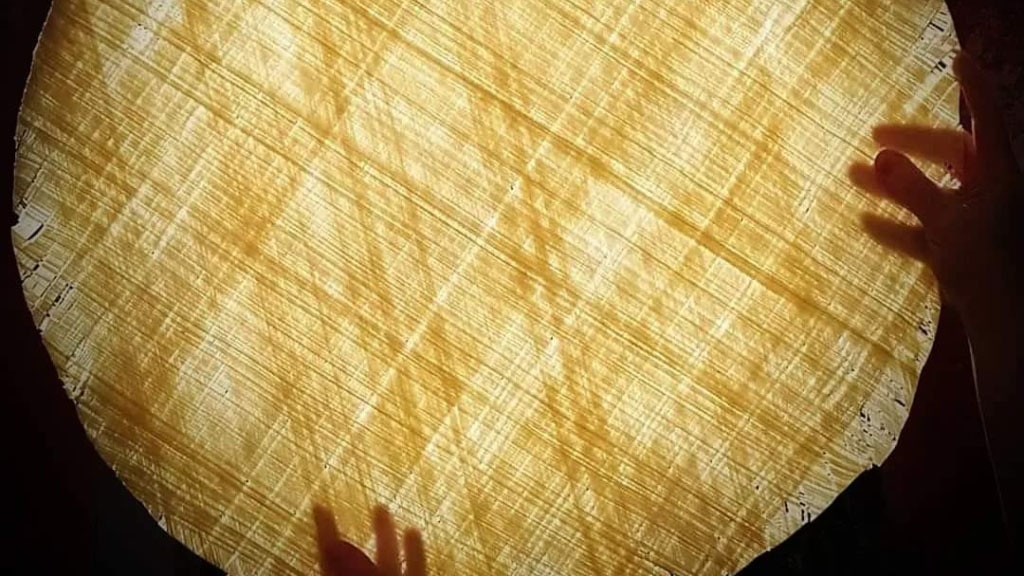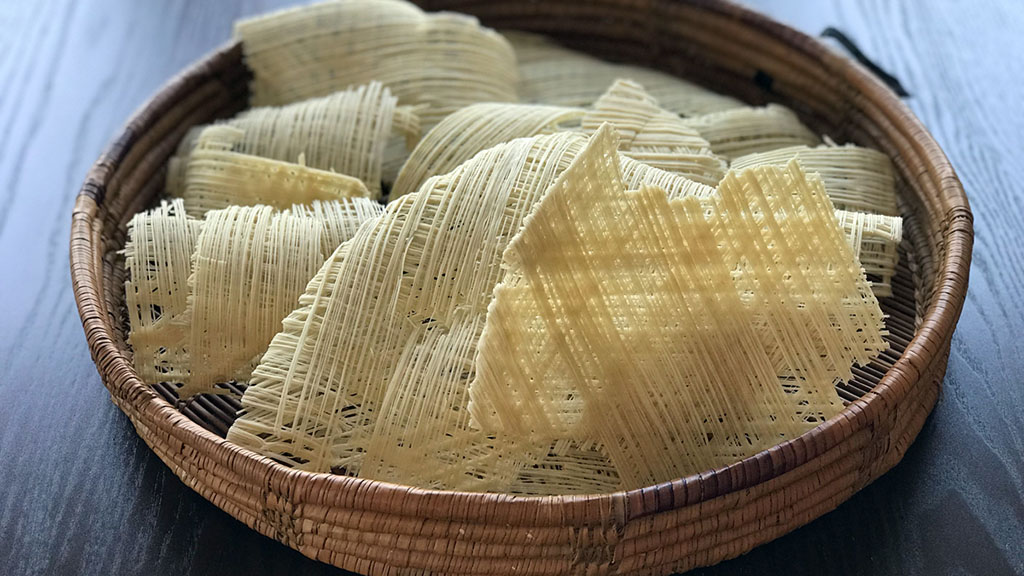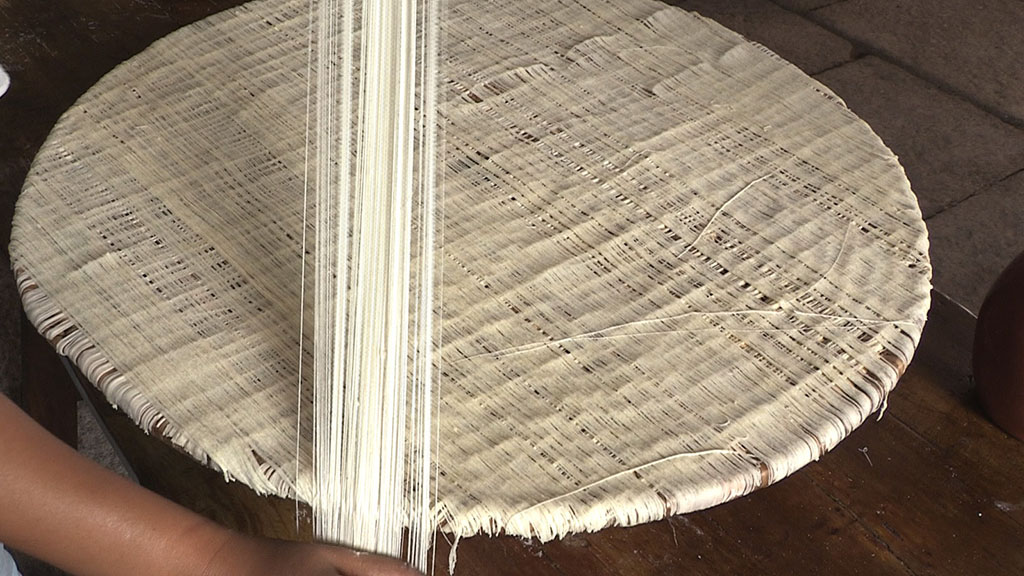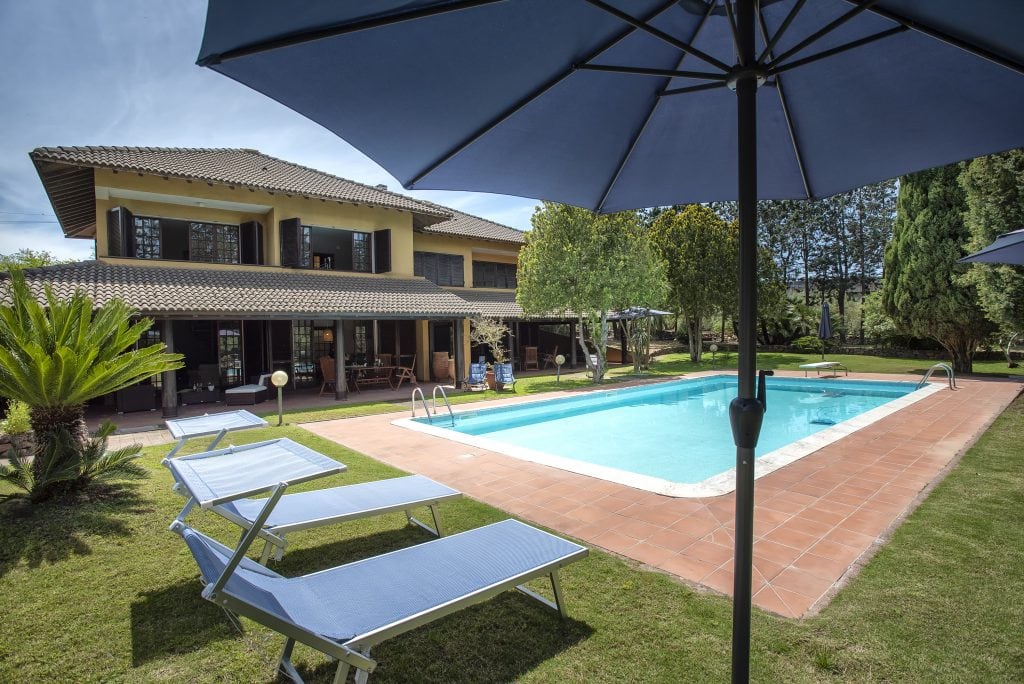The Sardinian Filindeu, among the oldest pastas in the world

Let’s unveil the origins, history and recipe of a typical Sardinian pasta, one of the oldest and
rarest in the world: filindeu!
Let’s start by answering one of the most frequently asked questions ever:
What does “filindeu” mean?
Filindeu, the meaning of the name
The type of pasta, composed of very thin vermicelli arranged to form a weave mimicking fabric,
comes from the East.
Specifically from Arabic cuisine, where it’s called sha’riya, meaning “hair”, precisely because of
its thinness.
Sha’riya was translated in the West as fidaswsh and from fidaswsh comes the Spanish fideos.
From Spain to Sardinia the name evolved as fideus, findèos, findeus, fundeos, filindeos and
finally filindeus.
The latter was used to emphasise the link between this pasta and the ancient religious rite to
which it’s linked.
Su Filindeu means “The Threads of God”.
In fact, the Filindeu has a very special history, beginning 300 years ago, linked to a miracle and a
sacred event that is still practised.
The places of Filindeu and its history
Su Filindeu is an important piece of Nuoro culture, linked to the religious tradition of St
Francesco of Lula.
Apparently, at some point in the 19th century, a young Nuoro resident was accused of murder.
Although he continued to declare his innocence, justice did not stop searching for him and he
found refuge in a cave in Lula, a small village about 30 km from Nuoro.
Thinking himself a goner, however, after a while he was persuaded to turn himself in. Instead,
when the trial was held, his innocence was miraculously proven and declared.
As thanks to the Saint of Lula, the exonerated young man had a sanctuary erected near the cave
where he had found shelter and addressed his prayers to St Francesco.

Every year since then, on 1 May and 4 October, the most devout inhabitants of Nuoro take part
in a night procession.
They walk 30 km until they reach the sanctuary of Lula, where they are greeted with a warm
dish of Filindeu.
Which is precisely our famous pasta, served strictly in sheep’s broth.
The processing of this pasta is quite long and begins already in the days before the feast.
The result is truly unique and well worth the effort.
Now let’s prepare it together!
Ingredients and preparation
To prepare su Filindeu according to tradition, you only need three ingredients:
⦁ semolina
⦁ water
⦁ salt
The ingredients are kneaded and divided into loaves of about 100 grams each.
As the loaves are worked, the others are covered with a damp cloth.
Once a loaf is taken, it is given a rather elongated cylindrical shape and this is where the magic
begins: the cylinder is folded and the ends are joined in one hand for the first time.
Then the opposite end is taken and the dough is stretched once more and the ends joined again.
This operation must be repeated 8 times and, each time the dough is stretched and folded, the
threads double, until 256 threads of very thin dough are obtained.
To create the “woven” texture, these threads are placed on a round, flat plate made of
intertwined Asphodel leaves so that the dough does not stick to the bottom and the threads
remain well stretched and parallel.
The intertwined leaves also give a certain porosity to the bottom surface of the pasta, allowing it
to better hold the sauce and be tastier once cooked in a soup.
At this point, another loaf is stretched and, when the surface of the dish is full, it gets rotated by
about 60° and new strands of dough are placed on top of the previous ones.
The operation is repeated two more times.
Once the weaving is complete and the loaves are finished, the dish is exposed to the sun so that
the pasta can dry properly.
When dry, the pasta is split and is ready to be put into the broth!
Over time, the recipe has been enriched with variations, so much so that in some places Filindeu
is now served in fish broth.

Sheep broth recipe for Su Filindeu
The Filindeu offered to the pilgrims of Nuoro is cooked in a hearty sheep broth with plenty of
fresh pecorino cheese.
The ingredients of the traditional broth are:
⦁ sheep meat;
⦁ onions;
⦁ potatoes;
⦁ celery;
⦁ parsley;
⦁ sun-dried tomatoes.
All the ingredients are boiled and left to cook over a gentle flame for about 4 to 5 hours.
Prolonged, slow cooking is the secret to obtaining tender meat and making the broth even
tastier.
After 4 to 5 hours, the broth should be strained and returned to the heat.
Once it reaches boiling point, the pieces of Filindeu can be added and cooked for just 3 minutes.
The dish is then ready to serve, hot and with lots of pecorino cheese!
Where to eat Su Filindeu in Sardinia
Today, very few people prepare Filindeu, which is why it has become the rarest pasta in the
world.
In Nuoro, there are only a dozen or so people left to make it. Nevertheless, you can still enjoy
this ancient pasta by buying a few packets at small farms or in some traditional restaurants.
In Alghero, it is also possible to participate in cooking courses, where shepherd families teach
the ancient art of preparing Filindeu, with a final tasting.
Plan your stay in Sardinia to discover the local gastronomic culture
For a food and wine tour in search of traditional Sardinian flavours, and to have the opportunity
to visit all the most magical places in the north of the island, choose a facility in Sassari, in a
strategic area that allows you to enjoy privacy and tranquillity while at the same time easily
reaching all the unmissable destinations in the area.

Discover DOMUS 81
